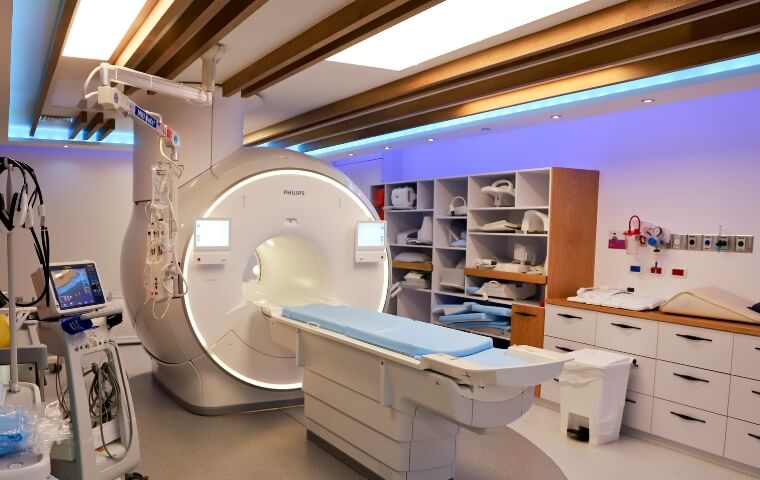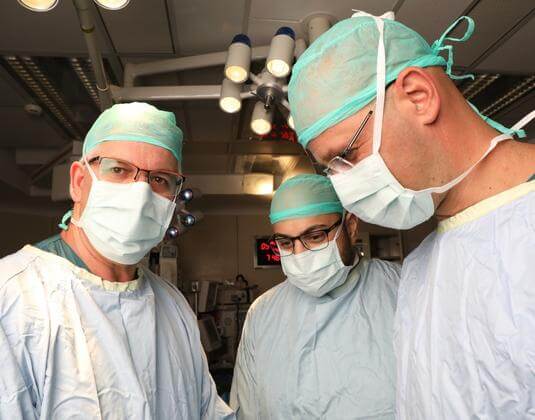Recovering From a Brain Aneurysm at Sheba Medical Center
Brain Aneurysm Treatment and Recovery at Sheba Medical Center
A brain aneurysm, also called an intracranial or cerebral aneurysm, is a potentially life-threatening condition in which a weakened blood vessel in the brain swells or balloons, fills with blood, and sometimes ruptures. The severity of aneurysms varies depending on their location in the brain and whether the blood vessel has burst. At Sheba, our specialists are equipped with cutting-edge technologies as well as extensive experience in diagnosing and treating brain aneurysms, improving prognosis and treatment outcomes.

Brain Aneurysms: An Overview
There are two types of brain aneurysms, saccular and fusiform. In saccular aneurysms, or berry aneurysms, the blood vessel bulges on one side. This type of aneurysm commonly occurs at the branching points of arteries at the base of the brain. On the other hand, in fusiform aneurysms, which are relatively less common, the entire circumference of the blood vessel swells. Both types of aneurysms can be fatal if the blood vessel bursts, leading to a condition called subarachnoid hemorrhage, where bleeding can cause extensive brain damage as well as a range of symptoms. The clearest sign of hemorrhage is a sudden sharp headache, often described by people who have experienced it as a “thunderclap headache,” a sudden blinding pain. You may also experience:
- Nausea and vomiting
- Sensitivity to light (photophobia)
- A stiff neck
- Neurological symptoms such as severe headaches, blurred vision, difficulty speaking, and weakness or numbness in the face, arm, or leg.
Although relatively rare, the mortality rate for a ruptured brain aneurysm is 50%. Treatment outcomes for brain aneurysms depend on the exact location of the aneurysm, whether it has ruptured, when it is diagnosed, and how soon treatment begins.
Brain Aneurysm Diagnosis
If you experience several or all of the symptoms above, it is imperative to seek immediate medical attention. In some cases, patients do not experience definitive symptoms, which is why brain aneurysms are often diagnosed during routine testing. Sheba’s specialists utilize cutting-edge imaging technologies to detect and diagnose aneurysms and establish the most appropriate treatment strategy.
Advanced imaging techniques used at Sheba include:
- Magnetic resonance angiography (MRA)
- Computed tomography angiography (CTA)
- Digital subtraction angiography (DSA)
These tests make it possible for doctors to visualize the blood vessels in the brain and identify any areas of bulging and weakness, or other signs of an aneurysm.
Treating Brain Aneurysms
Endovascular coiling
A minimally invasive procedure in which a small metal coil is inserted into the aneurysm to prevent blood flow to the area, reducing the risk of rupture.
Clipping
A surgical procedure that involves placing a metal clip at the base of the aneurysm to stop blood flow and reduce the risk of rupture.
Pipeline embolization
A minimally invasive procedure that involves placing a stent-like device inside the affected blood vessel to divert blood flow away from the aneurysm and reduce the risk of rupture.
Observation
In some cases, small aneurysms may not require treatment and can be monitored over time to ensure they do not grow or rupture.

Brain Aneurysm Rehabilitation
Following a brain aneurysm, patients may experience short- or long-term neurological and/or physical disabilities, whether due to the brain aneurysm itself or the subsequent treatment. In cases where the aneurysm has ruptured, the effects are more severe and longer-lasting. Symptoms can include:
- Cognitive difficulty, including memory, language processing, concentration, decision-making, and organizational issues
- Fatigue, both mental and physical
- Behavioral changes
- Chronic headaches and pain
- Weakness in the arms or legs
- Partial or complete blindness, as well as limited peripheral vision
- Loss of balance and difficulty with coordination
- Articulation and speech-delivery problems
In order to improve overall function, your physician may recommend neurorehabilitation, which addresses the above symptoms using a holistic approach. At Sheba’s Rehabilitation Hospital, a multidisciplinary team of physical therapists, speech therapists, occupational therapists, psychologists, and nurses carry out the rehabilitative process and support your recovery, whether as an inpatient or an outpatient. Brain aneurysms can be life-altering, and in the worst cases, fatal. However, with proper diagnosis, treatment, and rehabilitation, recovery can be achieved.
Request a consultation
Sheba Medical Center provides innovative, personalized medical care to patients from around the world. We are the largest, most comprehensive hospital in the Middle East and dedicated to providing advanced and compassionate medicine for everyone.
We welcome all cases, including the rarest and the most challenging. Our medical teams collaborate to provide the best possible health outcomes. From your initial inquiry through the long-term follow-up care, we are here for you.
Request a consultation and a Sheba Case Manager will contact you shortly:
